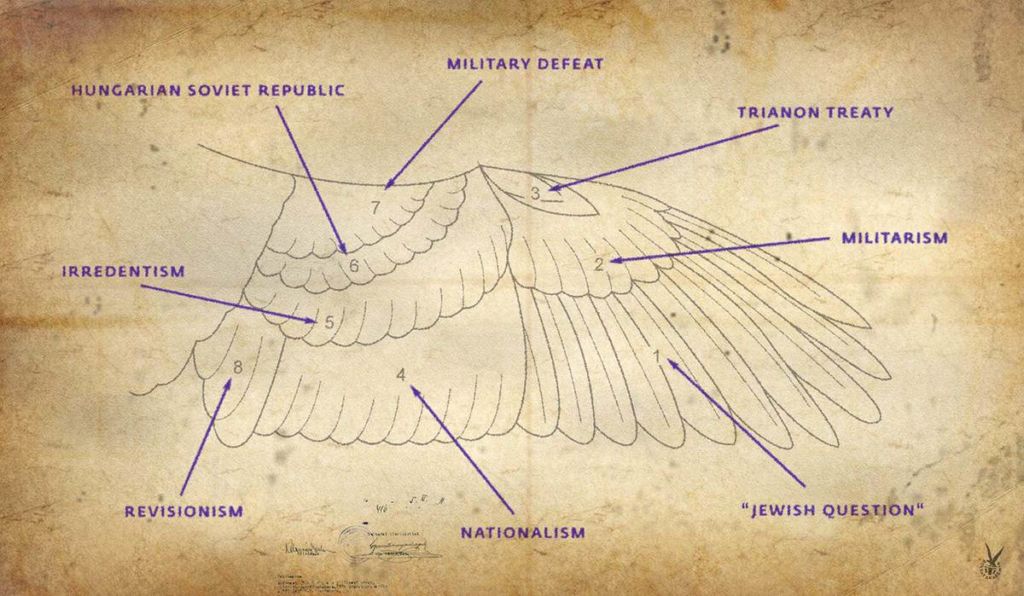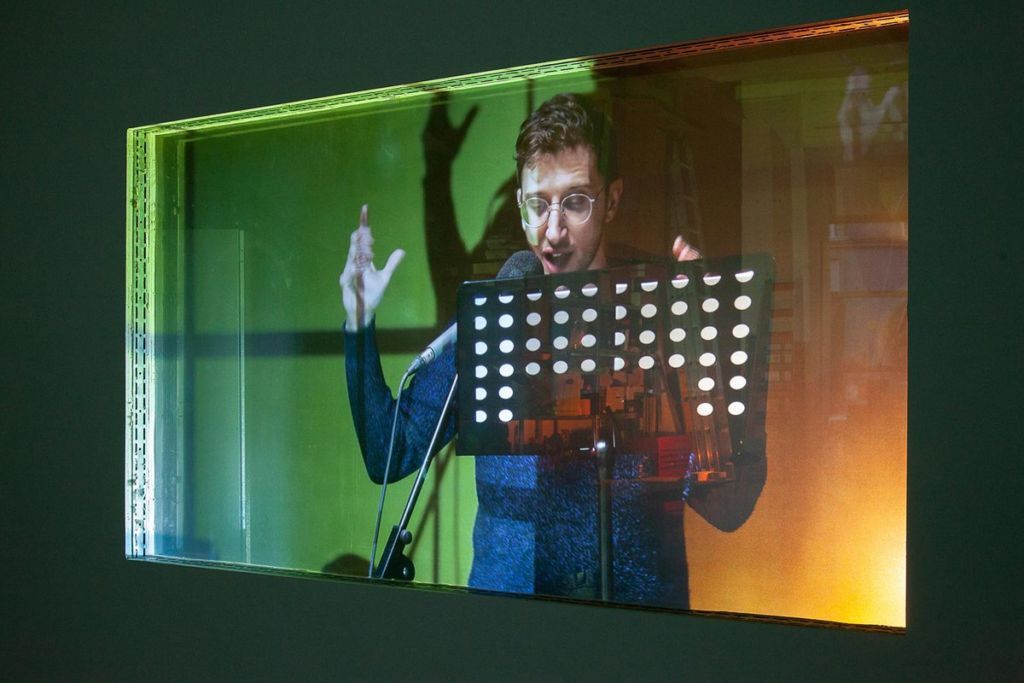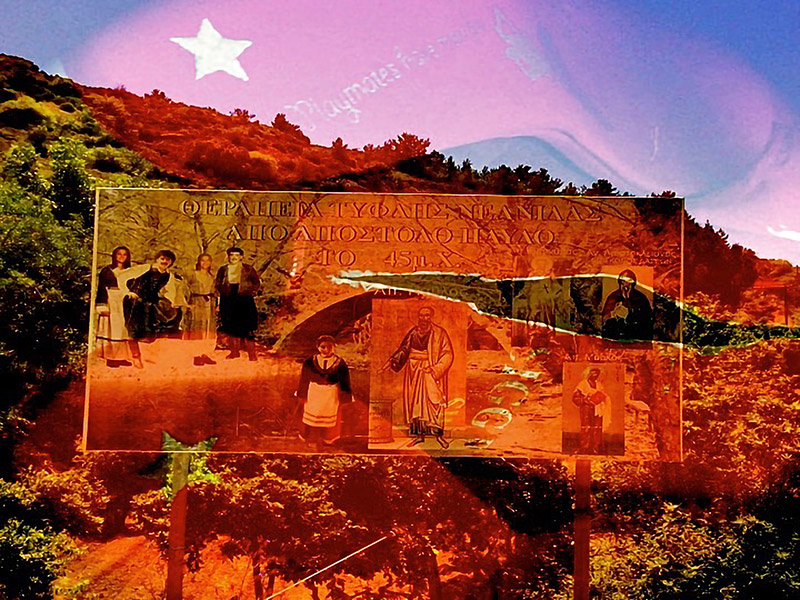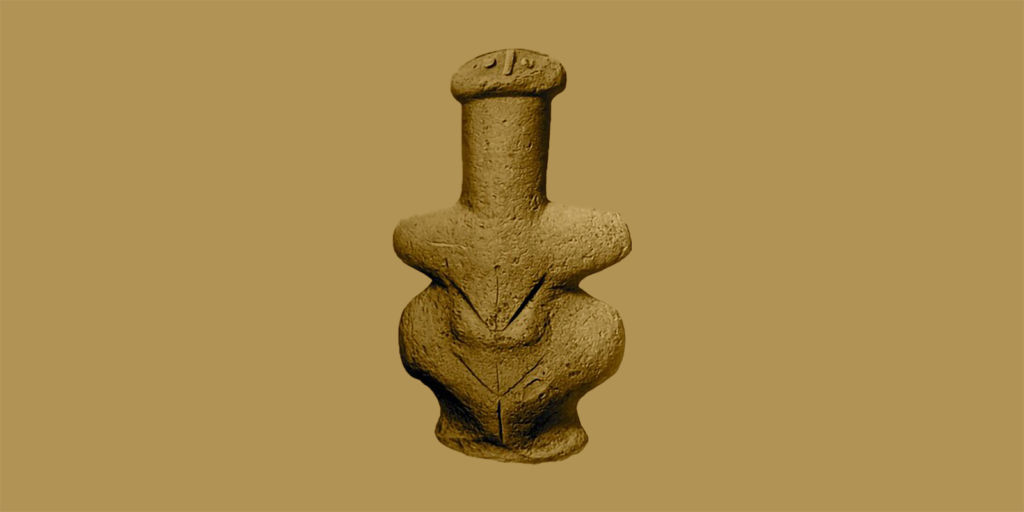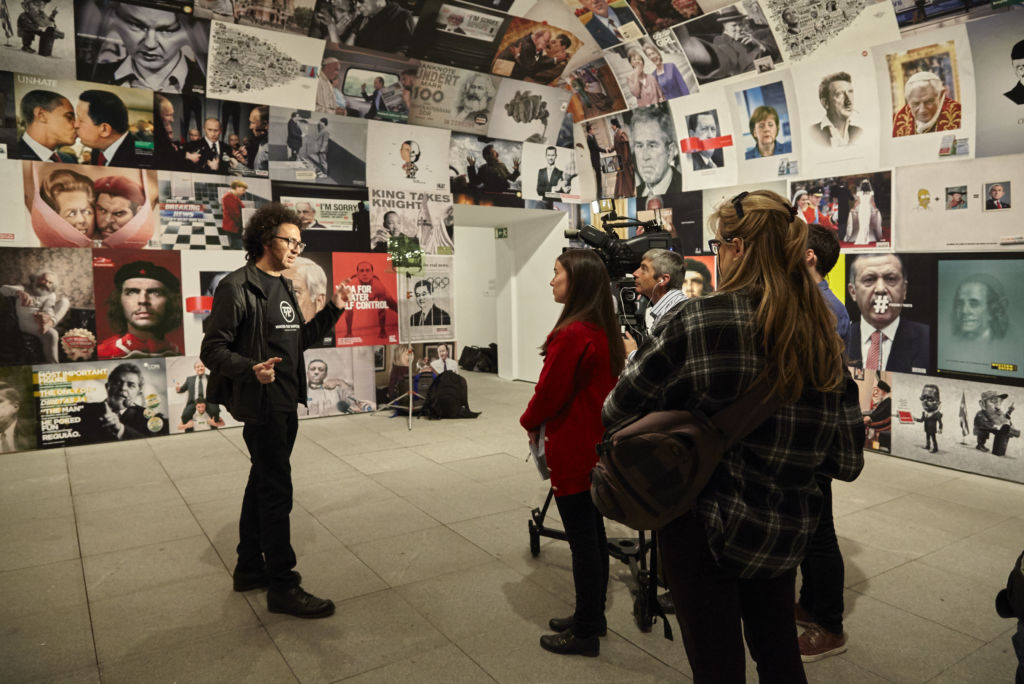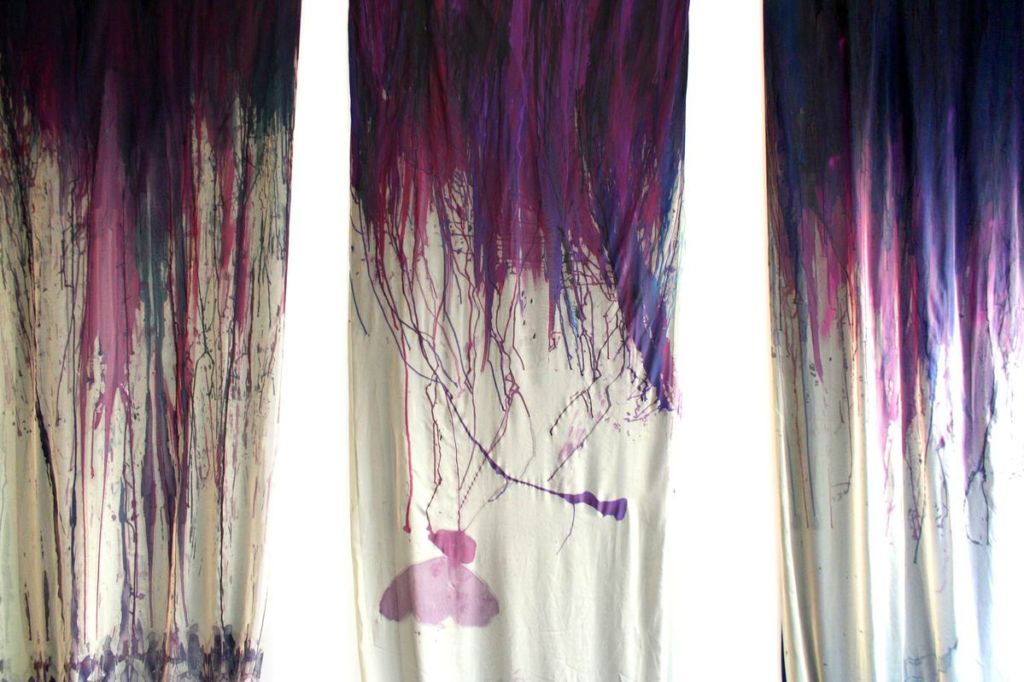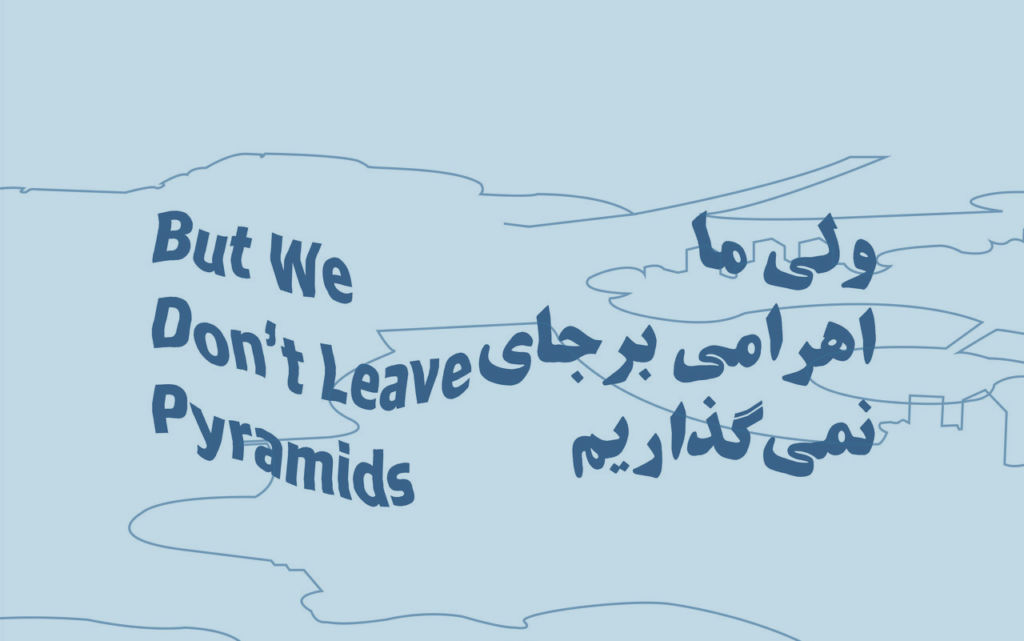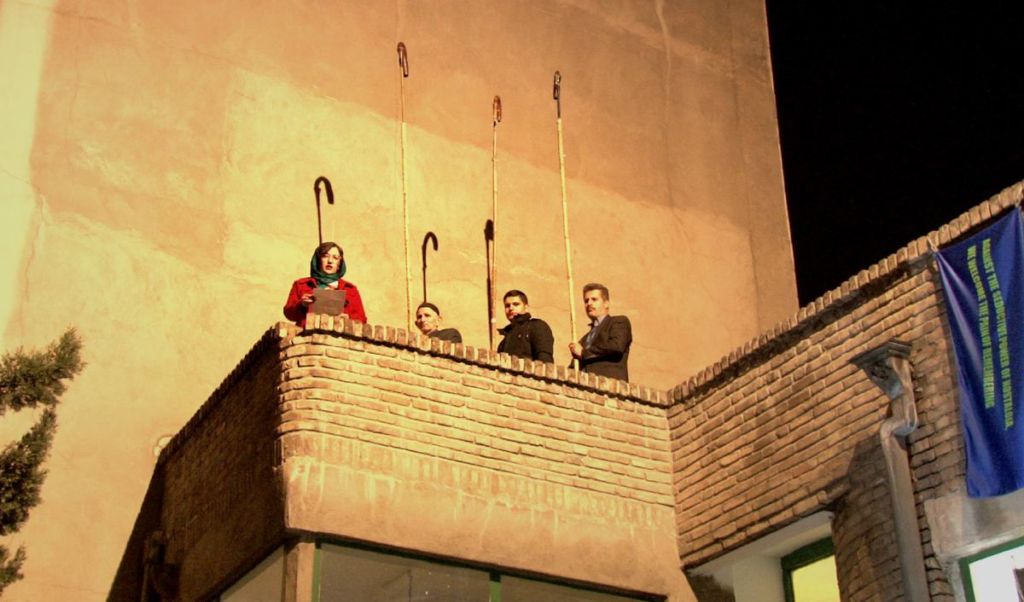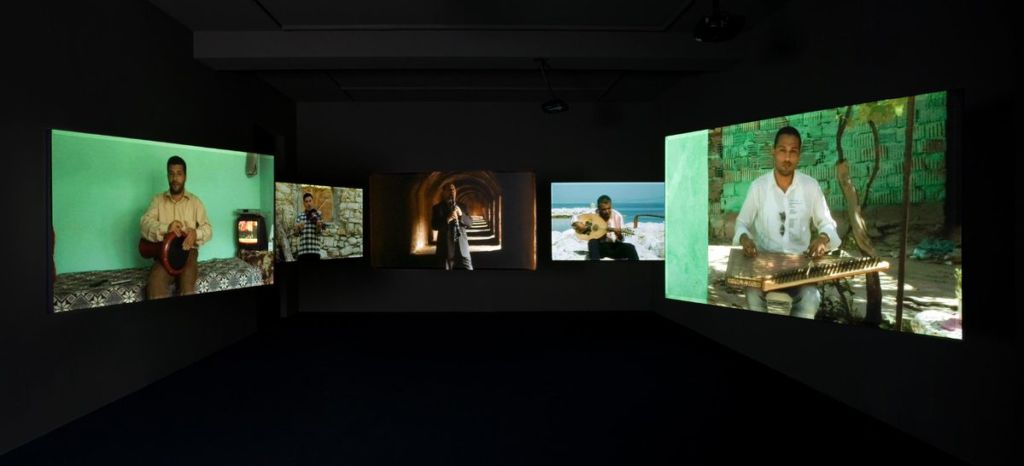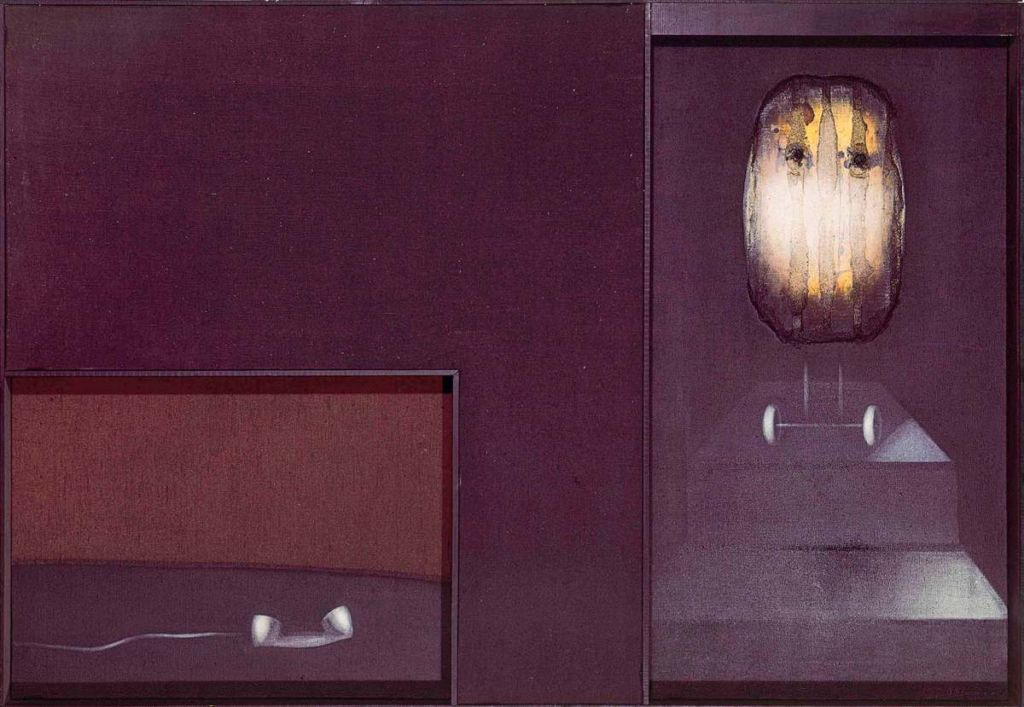Italian street art is rooted in a dense urban landscape of interstitial spaces, including post-industrial architecture, wasteland, abandoned buildings and squats, which, between the late 1990s and early 2000s, led young creators to develop new forms of urban painting. The work was spontaneous and illegal, and mostly derived from the experience of graffiti writing. Over the following decade, and with the proliferation of dedicated festivals, this practice gradually gained recognition from the cultural industry and the art world, which seems to have led to a loss of the spontaneous, dissonant character that originally characterised it.
BENGTSEN, Peter, The Street art World, Almendros de Granada Press, 2014, p. 11.
BECKER, Howard Saul, Art worlds, University of California Press, 2011.
SOMMER, Robert, Street art, Links, 1975.
SCHWARTZMAN, Allan, Street art, The Dial Press, 1985.
Le terme « graffiti writing » désigne une pratique urbaine illégale, née à la fin des années 1960 entre Philadelphie et New York, basée sur l’inscription du pseudonyme de l’artiste (« tag ») sur des surfaces urbaines (notamment les wagons des métros) dans un style graphique le plus original et inimitable possible.
BAUDRILLARD, Jean, « Kool Killer ou l’insurrection par les signes », L’échange symbolique et la mort, Gallimard, 1976, p. 118-128.
PARISE, Goffredo, « La nuova cultura popolare americana », New York, Rizzoli, 2001, p. 59-66.
Ce concept est formulé par les sociologues Nathalie Heinich et Roberta Shapiro. Il désigne la façon dont des pratiques « viennent à être traitées, collectivement et institutionnellement, comme de l’art. « Postface. Quand y a-t-il artification ? », De l’artification, HEINICH, Nathalie, SHAPIRO, Roberta (éd.), Éditions de l’École des hautes études en sciences sociales, 2012, p. 269-272.
PARISI, Vittorio, « Le street art satirique de Blu entre déartisation et auto-iconoclastie », Ridiculosa, N° 24 « Satire visuelle et espace public », EIRIS – Université de Bretagne Occidentale, 2017, p. 209-228.
Dans une interview de 2007 accordée à l’activiste iranien Karan Reshad. Disponible sur Kolah Studio
GOMBRICH, Ernst, The Story of Art, Phaidon, 1950, p. 5.
« Padania » est une autre façon de désigner la « pianura padana » (plaine du Pô). Le terme a trouvé un certain écho médiatique à partir des années 1990, quand le parti politique fédéraliste et séparatiste de la Ligue du Nord a proposé de donner le nom de « Padania » au projet de nouvel État indépendant de l’Italie du Nord.
MINELLI, Filippo, GALESI, Emanuele, Atlante dei classici padani, Krisis Publishing, 2015.
AUGÉ, Marc, Non-Lieux. Introduction à une anthropologie de la surmodernité, Seuil, 1992.
SOMMIER, Isabelle, « 7. Le rap engagé en Italie : un fil rouge entre les années 1968 et les années 1990 ? », Art et contestation [en ligne], Presses universitaires de Rennes, 2006. [Consulté le 15 avril 2020].
Pour une histoire du mouvement autonome italien voir notamment : BALESTRINI, Nanni, MORONI, Primo, La horde d’or. Italie 1968-1977. La grande vague révolutionnaire et créative, politique et existentielle, L’Éclat, 2017.
SOMMIER, Isabelle, op. cit.
PARISI, Vittorio, « Le graffiti writing et le street art entre non-lieux et lieux communs : un changement de paradigme », thèse de doctorat soutenue à l’Université Paris 1 Panthéon-Sorbonne le 8 octobre 2018, Annexe 10 : Carte géochronologique des festivals de street art en Italie (2002-2015), p. 445-455.
Parmi les contributions sur ce thème, je signale notamment : SCHACTER, Rafael, « The Ugly Truth: Street art, Graffiti and the Creative City », Art & the Public Sphere n° 3 (2014) p. 161-176 ; ou encore KOSTOV, Ana Bambić, « Street art As the Omen of Gentrification », Open Walls Gallery, 7 février 2018 [en ligne. Consulté le 15 avril 2020].
ADORNO, Theodor W, Théorie esthétique, JIMENEZ, Marc (trad.), Klincksieck, 2011, p. 345.
LEFEBVRE, Henri, Le droit à la ville, Economica, 2009, p. 88.
Street art: some historical and terminological landmarks
What are we talking about when we use the term “street art”? This is not a superfluous question, and a search on Google images or Instagram is all it takes to appreciate the wide variety of media, supports, techniques and styles, but above all the plurality of contexts in which the expression “street art” seems to have established itself. From spray paint to stickers or mosaics, from installations to projections, from small stencils to murals, from walls to street furniture, from illegal interventions to authorised performances, street art has gained entrance to galleries and museums, which sounds like an oxymoron that no longer surprises anyone.
Today it seems that the term “street art” can mean anything and everything, as the Danish art historian and sociologist Peter Bengtsen expresses more elegantly and rigorously: “The term Street Art cannot be defined conclusively, since what it encompasses is constantly being negotiated”1. Bengtsen adopts the pragmatic approach of American sociologist Howard Becker, for whom art is defined through its constant discursive negotiation within the “world” of which it is a part, in other words through the network of individuals who – directly or indirectly – contribute to its material production2. The concept of negotiation thus implies a conflict that has always seemingly haunted the expression “street art”, as well as the meaning and legitimacy of its use by the various members that make up the network. In this sense, Bengtsen’s statement is like an invitation to question not so much the origin of street art as an artistic phenomenon as the evolution of the discourses that accompany this apparently indefinable object.
We owe the first published reference to the term “street art” to the American environmental psychologist Robert Sommer, notably in his 1975 book Street Art. The term is used to refer to community murals in California, in other words, wall paintings, most of which are authorized, created by residents of the city’s neighbourhoods3. Ten years later, in 1985, another American author, Allan Schwartzman, wrote a book with the same title, but the term was now used to describe a new, essentially New York art scene, marked by young artists such as Keith Haring or Richard Hambleton, among others, who had come out of art schools4. These artists had made urban space their own terrain of expression, following in the footsteps of the graffiti writers5 who had dominated the New York urban scene for the previous fifteen years.
What about street art in Europe? The New York graffiti writing experience soon crossed the Atlantic. Among the first to draw attention to the phenomenon as early as 1976 were French semiologist Jean Baudrillard6 and Italian writer Goffredo Parise7, but it wasn’t until the early 1980s that young French and Italians began to practise graffiti writing. In Italy more than in France – where, contrary to what happened in the United States, this practice was established in an urban scene already marked by artists such as Ernest Pignon-Ernest or Gérard Zlotykamien – there seems to be a direct line of descent from graffiti writing to what is known as “street art”.
“Street art doesn’t exist”
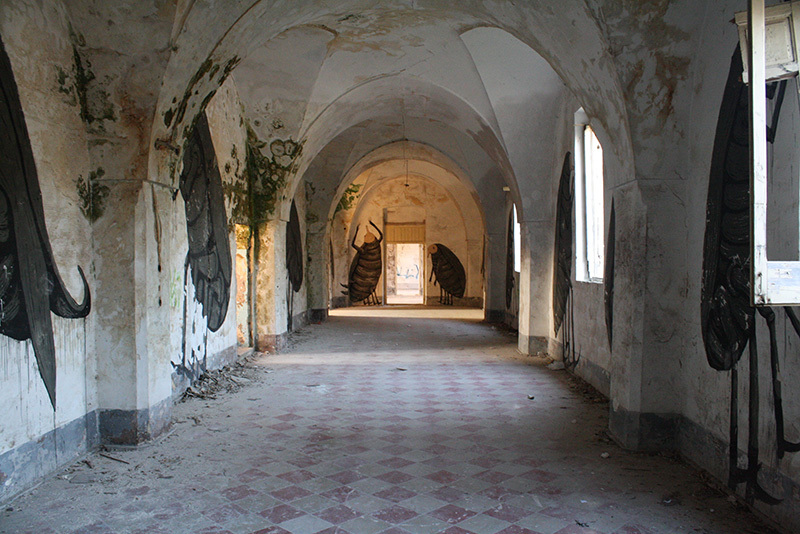
Ericailcane, wall paintings in an abandoned convent, Grottaglie, FAME Festival, 2009 © Vittorio Parisi
Among the pioneers of Italian street art, artist 108 began working in urban space at the end of the 1990s, starting with graffiti, and then transforming the figures of his tag, 108, into abstract forms, until it became an illegal urban pictorial expression, characterised by large irregular black shapes. Interviewed by the Italian magazine Design Playground, he acknowledges that the term ‘street art’ was more appropriate to describe the period “from the late 1990s to the early 2000s, when, over time, we went from tags to stickers, posters and stencils … it was still a spontaneous activity, but the word graffiti or writing no longer worked.” However, he is clearly perplexed about the current use of “street art”, often used to talk about interventions on façades, that are no longer spontaneous but authorised or even supported by institutions: “In most cases today it’s muralism, but the word street art is more fashionable and circulates more money […] a way of producing events, books and a bit of cash.”
The words of 108 hint at the first conflict inherent in the “world” of street art, opposing artists with people like events or book producers, who could be classified in the broader category of “legitimate” producers of culture and knowledge. The latter have contributed to the “artification”8 of street art, and yet the same culture and knowledge producers are responsible for a discursive construction that has proved to be far removed from the experience of the artists at the origin of the practice.
Blu, another protagonist on the Italian scene belonging to the same generation as 108, also started graffiti writing in the late 1990s, before moving on to figurative muralism, which could be defined as autonomous and radical – in the sense that he creates his large murals using climbing equipment, often on squat façades, without authorisation or institutional support – marked by anarchist, anti-militarist, anti-globalisation and environmentalist statements9. While 108 still recognises the historical and practical relevance of the term “street art”, Blu states clearly10: “Street art doesn’t exist, there’s just you and the world outside.” This statement may remind us of another, quite famous one by Ernst Gombrich: “There is really no such thing as Art – there are only artists”11.
While admitting that there is no such thing as street art per se, I wouldn’t go as far as to say that there are only street artists (a term that both Blu and 108 reject outright), but rather creators, all young, who spontaneously began working in the “world outside” that Blu talks about, and who, through no intention of their own, have been termed “street artists”, collectively and institutionally.
For a better understanding of the spontaneity that 108 refers to, largely derived from graffiti writing and which characterised Italian street art in the early 2000s, we need to look for it in the places where this art spontaneously germinated.

Blu, wall painting in an abandoned convent, Grottaglie, FAME Festival, 2009 © Vittorio Parisi
An art of non-places
The Po Valley is a kind of continuous suburb. What unites the artists of northern Italy is that we all carry within us the experience and memory of these places, for good or for bad. We hung out there even before we went there to paint, when we were children and when we used to ride around the abandoned factories, warehouses and wastelands on our bikes. What struck me most was that they were never really inhabited: they are populated only by the marginalized. I think mainly of voyeurs, prostitutes’ clients, nomads… outsiders of all kinds.
These are the words 108 used to describe to me the relationship between his work and the places where it developed when he was still a teenager. The interurban space that characterises the Po Valley thus resembles a large, diffuse periphery, architecturally marked by numerous abandoned industrial establishments and unfinished constructions. In 2015, another artist of the same generation, Filippo Minelli, together with the author Emanuele Galesi, created the Padania Classics website12, “a landscape research project to identify aesthetics and architectural specificities of the Po Valley.” The project gave rise to the Atlante dei classici padani (atlas of the classics of the Po Valley), dedicated to identifying and classifying an “urban canon of the Po Valley“, paradoxically based on architectural incompleteness, the overabundance of reinforced concrete, and the abandonment of industrial establishments13. According to 108, the graffiti writing and street art that developed in the Po Valley could only emerge within this strange, almost sinister interurban landscape: “Around 2004, when I realised that for years I had been walking around by myself making black spots in these uninhabited, ghostly places, I also realised that for me these places had become a kind of obsession, that I needed to go there to create my shapes. I realised that I too was an outsider, and that what I was doing was incomprehensible to most people: not really creating the black spots, but rather creating them in these places.”
The relationship between 108’s creations and the outside world seems to be based on the exploration of a post-industrial landscape, made up of residual and marginal sites, in a state of spatial and temporal indeterminacy: places that are at a standstill, interstitial, devoid or bereft of identity. In other words, by borrowing a concept from the French anthropologist Marc Augé, non-places14. For 108 and the artists of his generation, the spontaneous exploration and pictorial investment of these non-places began as a game. The game then took the form of a poetic, and therefore creative, approach to the urban landscape, where places undergo a metamorphosis: the unexpected appearance of the work gives them a new identity, and thus a new existence beyond their original function and their present state of abandonment. Place and work thus become one and the same thing.
This transformation is all the more radical in buildings that have been abandoned and turned into squats, which in Italy are known as “self-managed, occupied social centres” (CSOA). They are “part of the movement to occupy public or private buildings which began in 1968 with the primary aim of housing new workers in the large metropolises of northern Italy”15. They came to symbolize the turbulent political context of 1977, characterised by the armed radicalisation of the so-called “autonomist” extreme left movement16, and finally found new impetus in the mid-1980s, “instilled by the punk movement, with greater impact than in France”, marked by “the emphasis on so-called expressive activities, particularly musical, but also fanzines […] and then reviews; the development of self-produced activities in the artistic and literary fields; the introduction of cutting-edge technologies, in particular the militant use of the Internet”17.
Among the self-produced “expressive” activities cited and practised, mural painting has never ceased to occupy a pre-eminent place, first with graffiti writing, then with street art, notably in CSOAs such as the Virus and the Leoncavallo in Milan, the Ex Emerson in Florence, or the Atlantide and the XM24 in Bologna.
From squats to festivals
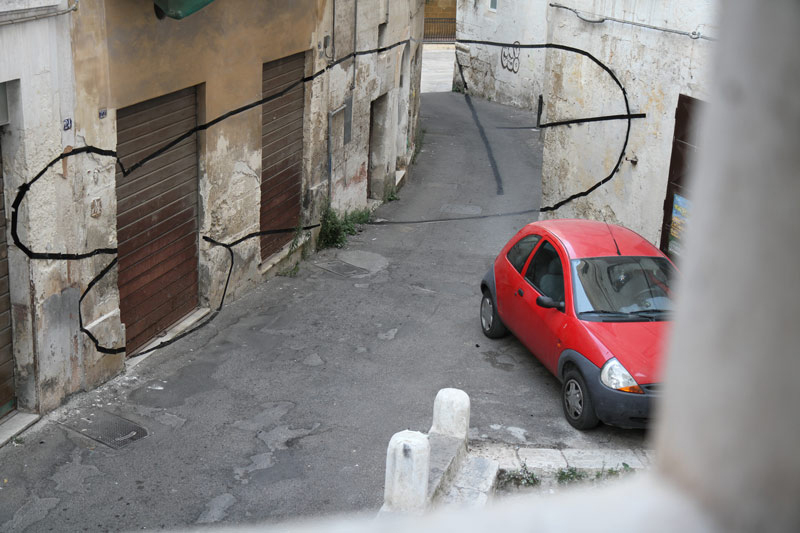
SAM 3, anamorphosis, Grottaglie, FAME Festival, 2011 © Angelo Milano
“CSOAs were the common denominator of a whole generation of marginal creators“, says Angelo Milano, a silkscreen printer from Grottaglie, a small town in Puglia with a population of just over thirty thousand and mainly known for its ceramics production, which dates back to the 8th century BC. Before returning to his home town in 2006, Angelo had studied in Bologna, where he befriended Blu and Ericailcane – another representative of the first generation of Italian street artists – and he attended the CSOAs Atlantide and XM24. “I played in a punk band, they painted. I never heard anyone use the word street art, nobody said ‘let’s go do some street art’, but rather ‘let’s go painting, let’s go drawing’. After a while we saw the word coming up in books, magazines and certain English-speaking websites, but neither me nor my mates gave a shit about that crap.” Angelo is also the founder of the FAME festival, held in Grottaglie from 2008 to 2012, the first of its kind organised in southern Italy and recognised as one of the most important European street art festivals despite the categorical refusal of its organiser to consider it as such. FAME brought together artists who are now well-known worldwide: Blu, Ericailcane and 108, but also the French JR, the Portuguese Vhils and the American Swoon…
The first street art festivals appeared in 2002 with Icone, held in Modena, in Emilia-Romagna. Pietro Rivasi, its founder, had been doing graffiti since the early 1990s and had come into contact with two graffiti writers from the Paris scene: Honet and Stak, the latter known today under his name, Olivier Kosta-Théfaine. In the 2000s, in the same spirit of formal investigation that had led 108 to transform his tag into an abstract pictorial language, Stak and Honet gradually moved away from their tag, and began experimenting with other languages, closer to contemporary art. Pietro invited the two artists to Modena and set up an exhibition with them in a café in the city centre, as well as the creation of works in the urban space, with authorisation from the city council: “Icone was born from the desire to show what some European graffiti writers were doing, i.e., reconsidering their practice in the light of the theories and languages of contemporary art. At the time, nobody thought we were going to distort the principle of graffiti writing by organising an exhibition, or painting on authorised walls, because we all had ‘street cred’. We’d all been there illegally and we’d all been caught by the cops, but in Modena everything was very complicated: unlike in Bologna there was no CSOA where you could paint illegally without being arrested. When someone liked graffiti and let us paint legally on the walls, we didn’t say no, and at the same time we had no idea that this thing called street art would one day explode in this way.”
The explosion Pietro refers to is illustrated by some rather telling figures: in 2002 Icone was the only active festival in Italy, but in 2008 (the year of the first edition of FAME) there were four festivals. Then thirteen in 2012 (the year of the last edition of FAME) and twenty-eight in 201518. The discourse that often accompanies the organisation of a festival – especially when it is supported by a public institution and takes place in the suburbs – shows the recurrence of the theme of “urban requalification.” Here are some examples:
“ […] to regenerate certain degraded areas of the city and revitalise urban spaces through artistic projects, so that streets and suburbs are not synonymous with greyness” (Bonito Contest Art Festival website); “a participatory public art project dedicated to the urban, cultural and social requalification of these grey areas of the city, starting from the historic Tor Marancia district” (Big City Life Festival website, Rome); “Colours and culture to transform the most neglected areas of the city and stimulate a process of interaction and mutual contamination” (article on the festival Memorie urbane, Gaeta); “an international public art competition […] to improve the environmental quality of the district […] to trigger a process of redevelopment […] on the physical, economic, social and cultural level” (website of the Turin City Council in reference to the urban art competition B. ART).
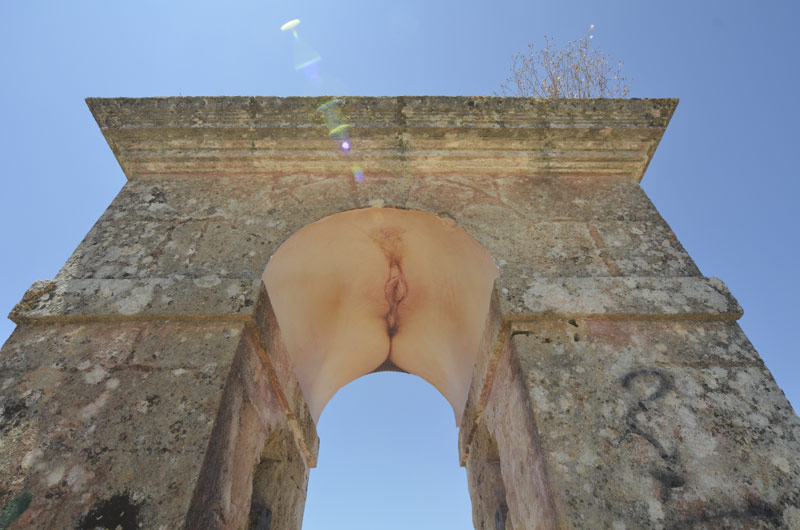
Boris Hoppek, wall collage, Grottaglie, FAME Festival, 2011 © Angelo Milano
“Grottaglie was a sleepy town run by a handful of ignorant criminals. When I got back I felt the need to invite my mates to shake things up a bit. I never intended to re-qualify anything. Quite the opposite.” Compared to the storytelling generally used to describe street art festivals, Angelo Milano’s discourse is of a totally different kind, based on a principle of permanent antagonism towards the institutional world and its self-celebrations.
FAME was in fact the only festival organised without any relationship with local institutions, and therefore without asking for any public or private subsidies. Each edition of the festival was self-financed through the sale of silkscreen prints, drawings and canvases made on the spot by the guest artists, with the side effect of contributing decisively to the consolidation of a street art market: “The idea at first was to create an alternative to the art world and the art market, our own alternative. It was about doing our own stuff, out of boredom and wanting to have some fun with friends, and nobody thought that one day we would have a real career as artists. It wasn’t even part of our plans. Let’s face it: we didn’t even buy the paint, we just went out and stole it.” Another characteristic of FAME was continuity with the notion of playful spontaneity and illegality that characterised the era of non-places and squats. “We never asked for permission from the town hall to go painting“, continues Angelo. “At worst we asked the owners of the façades, but that wasn’t often the case.” In the beginning, some of his work got him into a lot of trouble with the residents and the local authorities: one example is the painting inside the old Capuchin convent, built in 1536 and abandoned since 1986, but still protected by the Soprintendenza (a body of the Ministry of Culture, responsible for protecting architectural, artistic and landscape heritage).
However, as Angelo recounts in an interview with the magazine Artribune, things changed quite quickly, and the aura of vandalism that characterised the first editions of the festival gradually drew the interest, approval and enthusiasm of the media: “The early years were much better, because the festival created friction and it was a lot of fun. Then, with the growing fame of the guest artists, the press and the Internet started to spread the word that FAME was an event that needed to be supported. As a result, the frictions disappeared and everything was diluted into a general consensus, literally dictated by the media: the dumber the article, the more authority it gave to the festival.”
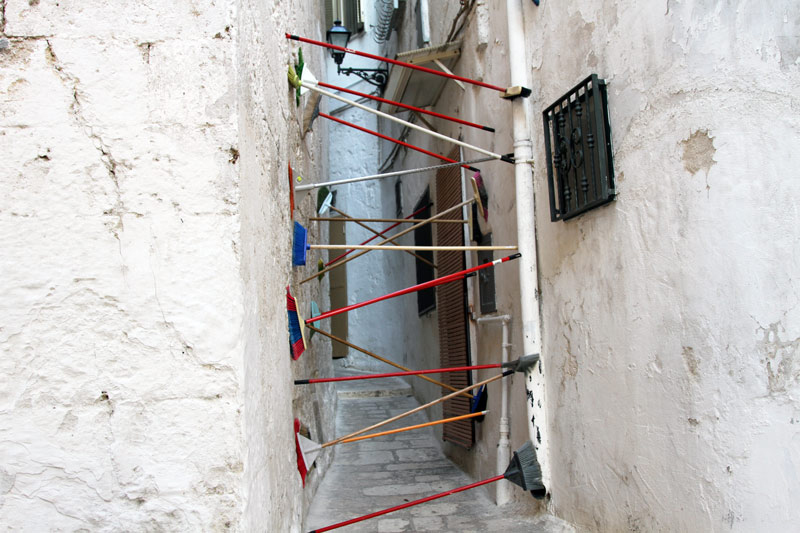
Brad Downey, installation, Grottaglie, FAME Festival, 2011 © Angelo Milano
So after the fifth year, Angelo decided that the FAME experience was over: “By the end of the last edition everything had become pretty simple: paint wherever, make videos, even smash things up under the watchful eye of the authorities. No matter how hard we tried to do ugly, provocative stuff, all we got in return were smiles and goodwill. The original tension had gone […] Everywhere in Italy and Europe the festivals multiplied, all identical and interchangeable. Institutions and politicians began to finance their little festivals and public consumption was soon down to a few clicks on Facebook. At that point I felt a total lack of meaning in what we were doing.”
In retrospect, the name of the festival “FAME“, which played on the double meaning of the word in Italian (“hunger“) and in English (“fame“), takes on a strangely prophetic air: FAME’s spontaneous, illegal and anti-institutional approach was destined to be devoured by its own media fame.
An end to “administered” street art
While on one hand, the proliferation of street art festivals has contributed to the social recognition of an art and artists who, vis-à-vis the cultural industry and the art world, were only “outsiders”, on the other hand, under the pretext of “requalifying” the suburbs, it has produced two collateral effects. The first is aesthetic and consists in transforming this art and its original character, marked by the spontaneous exploration of non-places, into a pure institutional tool for urban embellishment. The second is of a political nature and consists of compensating for the deficit of social management in the suburbs by the inexpensive embellishment of the façades and the organisation of festive, even social events. In addition to this second collateral effect, there is the risk of exacerbating segregation, particularly through gentrification, whose link with street art has been a subject of debate for years19.
In the final analysis, festivals seem to fall squarely within the scope of what the German philosopher Theodor W. Adorno called “administered art“, i.e. “the progressive organisation of all sectors of culture […] the sovereignty of the topographical gaze, which localizes phenomena in order to assess their function and their right to exist”20. In festival form, street art has certainly become one of the latest and most topical cases of administered art, an art whose immediate political and commercial “consumability” is demagogically hidden behind the façade of good intentions. But in reality it ends up by exacerbating the effects of segregation.
However, in Italy, the spontaneous and unmediated approach that was at the root of street art has managed to survive outside the festival format, and even to have surprising repercussions, aesthetically as well as socially and politically, as illustrated by the case of Blu who continues to practise his radical, autonomous muralism within communities of squatters, migrants and environmental activists. Another example is that of the Neapolitan artist duo Cyop & Kaf who, from 2010, in a totally independent, unauthorised and self-produced way, have been painting murals on a human scale around the Spanish neighbourhoods of Naples and old Taranto, establishing a permanent dialogue with the residents of these neighbourhoods and involving them in the creative process.
Like Blu and 108, Cyop & Kaf are among the artists who refuse to be styled as “street artists”, and are wary of waving “the banner of participation, requalification and social intervention“, like those who “build careers by getting up on stage like old prostitutes“. On the other hand, they claim a “pictorial approach […] but one that is physical and close” to the residents: an approach based on the principle of spontaneous re-appropriation and permanent transformation of the urban area by the residents, as Henri Lefebvre recommended in his description of the ideal city, namely: “the ephemeral city, the perpetual work of the residents, who are themselves mobile and mobilised for/by this work.”21
Within this essential context, there is no room for authorised events, handshakes or press releases. Street art, or rather the art of the “world outside”, thus regains the discursive autonomy and value of dissonance that seemed to belong to a bygone era.
Translation by Angela Kent
Cover: 108, wall painting in an abandoned dairy farm, Vedriano 2014 © Guido Bisagni

